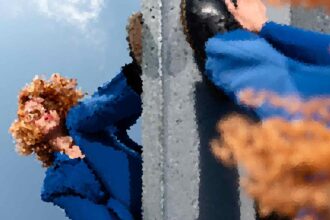Introduction to Tyler Heinz World Classrooms
Imagine a classroom where learning knows no bounds. A place that transcends traditional walls and connects students to the world outside. Welcome to Tyler Heinz World Classrooms, an innovative approach reshaping education as we know it. In this vibrant environment, curiosity is sparked, creativity flourishes, and every student has a chance to thrive.
Gone are the days of one-size-fits-all teaching methods. The current education landscape often falls short in catering to diverse learning styles and needs. But with Tyler Heinz leading the charge, there’s hope for a brighter future—one that empowers both students and teachers alike.
This blog post will explore how Tyler Heinz World Classrooms is challenging the status quo, fostering genuine connections in education, and paving the way for transformative experiences across classrooms everywhere. Buckle up; you’re about to discover how innovation can set learners free!
The Current Education System and Its Limitations
The current education system often feels outdated. Rigid curricula and standardized testing dominate classrooms, stifling creativity and critical thinking.
Students are boxed into a one-size-fits-all approach. This leaves many disengaged or overwhelmed by the pressure to perform. The emphasis on grades can overshadow genuine learning.
Teachers, too, face challenges in this environment. They navigate bureaucratic hurdles while trying to inspire their students. Limited resources and support make it difficult to innovate.
Moreover, diverse learning styles are frequently overlooked. Not every student thrives under traditional methods of instruction. Many require personalized approaches that aren’t feasible within existing frameworks.
This disconnect between educational practices and the needs of learners creates gaps in understanding and retention. It’s clear that something must change for both educators and students alike.
How Tyler Heinz is Revolutionizing Education
Tyler Heinz is reshaping the educational landscape through innovative approaches that prioritize student engagement. His World Classrooms initiative brings learning to life, integrating technology and real-world experiences into the curriculum.
By leveraging immersive environments, students are no longer passive recipients of information. They actively participate in their education, fostering critical thinking and creativity. This hands-on approach encourages collaboration among peers and teachers alike.
Heinz emphasizes personalized learning paths tailored to each student’s unique needs. This adaptability not only boosts academic performance but also cultivates a love for lifelong learning.
Moreover, he advocates for global citizenship by connecting classrooms worldwide. Through virtual exchanges and collaborative projects, students gain diverse perspectives beyond their immediate surroundings.
The result? A generation of learners equipped with the skills necessary to thrive in an interconnected world. Tyler Heinz’s vision is transforming education into a dynamic journey rather than a one-size-fits-all process.
The Impact of World Classrooms on Students, Teachers, and Schools
World Classrooms are reshaping the educational landscape in remarkable ways. Students engage with diverse cultures and perspectives, expanding their horizons beyond traditional textbooks. This exposure fosters empathy and global awareness.
Teachers also benefit from this innovative approach. They receive training to integrate new methodologies that enhance engagement. Collaborative projects ignite passion, transforming classrooms into vibrant learning hubs.
Schools experience a shift in dynamics as well. The introduction of World Classrooms encourages community involvement and partnerships with local organizations. This collaboration paves the way for resources that were previously unavailable.
Moreover, academic performance sees an uptick as students become more invested in their education. The excitement generated by these programs cultivates a love for learning that lasts a lifetime, creating enthusiastic scholars ready to tackle real-world challenges head-on.
Success Stories from World Classrooms’ Programs
World Classrooms has sparked remarkable transformations in various educational settings. One standout success story features a group of high school students from an underserved community. They participated in a project that connected them with global peers through virtual exchanges. This experience broadened their perspectives and enhanced their critical thinking skills.
Another inspiring example involves elementary school teachers who adopted World Classrooms’ innovative teaching methods. These educators reported increased student engagement and enthusiasm for learning, as they introduced real-world problems into the curriculum.
A middle school’s implementation of the program led to improved academic performance across subjects. Students became more motivated when they saw how their lessons applied outside the classroom.
These stories highlight not just individual achievements but also a collective shift towards a more dynamic and relevant education system, proving that change is possible with creativity and dedication.
The Future of Education with World Classrooms
The future of education with Tyler Heinz World Classrooms is bright and promising. As technology continues to evolve, so does the way students learn. World Classrooms aims to integrate innovative tools that foster creativity and critical thinking.
Imagine classrooms where virtual reality transports students to historical sites or scientific environments. This immersive learning experience can make lessons more engaging and impactful.
Moreover, collaboration among diverse student groups encourages cultural exchange. It prepares them for a globalized world by teaching empathy and adaptability.
Educators will also benefit from this shift. Professional development programs centered around modern teaching methods empower teachers to facilitate dynamic learning experiences.
As these transformations take root, we can anticipate an education system that prioritizes holistic growth over rote memorization. Students equipped with real-world skills will emerge ready to tackle challenges beyond the classroom walls.
Conclusion: Why We Need More Innovators Like Tyler Heinz in Education
The landscape of education is ever-changing, yet many remain stuck in outdated practices. Tyler Heinz stands out as a beacon of innovation. His vision for World Classrooms offers a fresh perspective that challenges traditional methods.
Innovation in education is crucial. It nurtures creativity, critical thinking, and adaptability among students. Having more pioneers like Heinz would drive systemic changes necessary for today’s learners.
Imagine classrooms where collaboration and engagement replace rote memorization. This shift can prepare students for real-world challenges they will inevitably face.
Tyler Heinz exemplifies the potential within educational reformers to inspire both teachers and students alike. Embracing such forward-thinking leaders could lead us toward a brighter future in education—one that’s dynamic and inclusive for all learners.
FAQs
As education continues to evolve, questions often arise about new methodologies and approaches. Here are some frequently asked questions regarding Tyler Heinz World Classrooms.
What is Tyler Heinz World Classrooms all about?
Tyler Heinz World Classrooms focuses on transforming traditional educational models by emphasizing global awareness, experiential learning, and student-centric approaches. The aim is to create a more inclusive learning environment that prepares students for the real world.
How does this program benefit teachers?
Teachers engage in professional development tailored around innovative teaching strategies. They gain access to resources that help them become facilitators of knowledge rather than traditional instructors.
Can parents get involved with World Classrooms initiatives?
Absolutely! Parents are encouraged to participate in various programs and activities. Their involvement fosters a stronger school community and enhances the support system for students’ learning experiences.
Are there any specific age groups targeted by these classrooms?
World Classrooms cater to multiple age ranges, from elementary through high school levels. This flexibility allows educators to adapt content based on developmental needs while addressing a diverse range of learners.
What success metrics do you use for measuring impact?
Success can be measured through improved academic performance, higher engagement rates among students, positive teacher feedback, and increased participation in extracurricular or community service activities related to global citizenship.
Is there potential for expansion beyond current locations?
Yes! The vision includes expanding into more schools across different regions. By collaborating with other educational institutions worldwide, they hope to share best practices and inspire further innovation in teaching methods globally.
With emerging leaders like Tyler Heinz at the forefront of change within education systems, it becomes evident how crucial innovation is for future generations.











